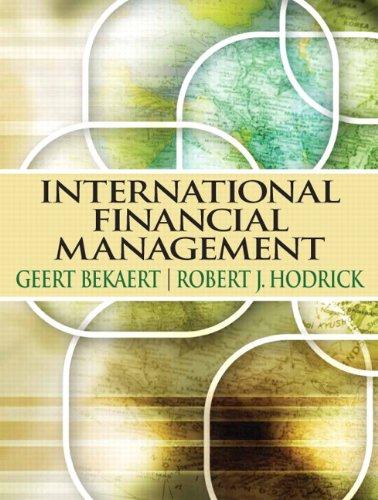Question
Alice, a fresh college graduate with a fervor for sustainability, has embarked on her dream project: setting up an eco-friendly coffee shop right inside the
Alice, a fresh college graduate with a fervor for sustainability, has embarked on her dream project: setting up an eco-friendly coffee shop right inside the new business school building. She has committed to sourcing only organic, fair-trade coffee beans. Moreover, she's championing the green cause with compostable cups and packaging. In a move to encourage sustainable practices among her customers, those who bring their own mugs get special discounts. The coffee shop, though primarily centered around coffee, offers a varied menu. Customers can get a regular coffee for $3.50, while flavored coffee costs $4.50. The specialty drinks, which are a blend of exquisite ingredients and craftsmanship, come with a price tag of $5.00. Alice also plans to introduce quick-service foods. There are sandwiches priced at $7.00. Salads are available for $8.00. Pastries are at priced at $3.00 apiece. In terms of the variable cost, a regular coffee has an initial cost of $0.70. Yet, if the daily demand exceeds 50 cups, the costs drop to $0.55 per cup. The flavored coffee starts with a cost of $1.00. But if the daily demand goes above 30 cups, the per cup costs reduce to $0.90. The specialty blends have a cost of $1.20. If their daily sales cross 25 cups, the cost per cup is adjusted to $1.00. When it comes to food, the costing is more linear. Pastries have a set cost of $1.50. Sandwiches come with a production cost of $3.50. Salads have a cost of $4.00. A regular coffee requires three minutes of crafting. The flavored ones take about five minutes. The specialty brews demand a good seven minutes of a barista's time. An employee would effectively work for 7 hours, which translates to 420 minutes per day, assuming an hour's worth of breaks and non-coffee-making tasks (like cleaning, restocking, etc.) during an 8-hour shift, Alice annual salary is $60,000. Each employee earns $3,500 per month. The monthly rent for her prime location is set at $4,000. Utility bills are projected at approximately $1,200 monthly. Other costs include tech needs like a point-of-sale system for $150, online advertising for $300. The legal and licensing fees per year are $4,800, and $7,200 for insurance. Alice also needs to spend a one-time investment: $18,000 for the interiors, $14,000 for equipment, and $8,000 for mandatory licenses and permits. In terms of demand, Alice has observed some patterns. Of the students, faculty, and staff who saunter in, 60% usually opt for a regular coffee. Flavored coffee finds takers in 25% of the crowd, while the specialty blends are the choice of 10%. When it comes to food, about half of the visitors prefer a bite with their brew. Of these, 40% enjoy the pastries, 20% opt for sandwiches, and 15% relish the salads. 1. In the first worksheet, build a financial model for the company. The analysis should be based on monthly frequency. 2. Calculate the breakeven point (in terms of number of customers per month) from your spreadsheet analysis. 3. . If the employee only can work effectively 80% of the 420 minutes, how will this affect your analysis? Perform sensitivity analysis on how the efficiency rate change will affect profits. Try a range of efficiency rate 100% to 50% on a 5% interval.
Step by Step Solution
There are 3 Steps involved in it
Step: 1

Get Instant Access to Expert-Tailored Solutions
See step-by-step solutions with expert insights and AI powered tools for academic success
Step: 2

Step: 3

Ace Your Homework with AI
Get the answers you need in no time with our AI-driven, step-by-step assistance
Get Started


